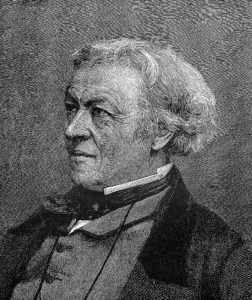(The names were changed, well removed, to protect the innocent and guilty)
On September 8th, I received an email stating:
Hello ~ Recently acquired what is being claimed as a JBC Corot painting. I have a small window within which to authenticate or return the piece. Please let me know if this is a service you could provide for this painting or any thoughts otherwise.
I replied, stating that the Corot expert, Claire Lebeau, is in France, and the authentication process is not always a quick one. Many times, experts want to see the work in question physically. I also stressed that the responsibility of ensuring a painting's authenticity should be the seller's, not hers.
She got back to me, asking if there was any way the authentication could be done just with some good photographs since she only had until September 27th to return the work. She also mentioned an art expert website called www.corotexperts.com, and that she considered contacting them, but there was little background on their expertise.
I gave her a call rather than write a long email explaining the difficulties of navigating the art world. I first mentioned that many websites claim to be run by experts; the true experts operate very few of them. These sites are managed by people trying to get money for something you can do by yourself. I also went into more detail about the authentication process and the expenses involved, not the least of which are the packing, shipping, temporary import paperwork for overseas experts, etc., which can run thousands of dollars. On top of all that, some authenticators also only examine works at specific times of the year – monthly, quarterly, etc.
During our conversation, she mentioned the work as bought at an auction in Maine and was not too expensive. I replied that if someone owned a painting that was potentially worth over $100,000, would they offer it in a country sale with a very low estimate? I doubt it. Over the years, I have seen many instances where works were presented to experts who gave a negative opinion. Then, a year or two later, the same painting appeared at auction, cataloged as a genuine work by the artist. This has happened with some fake Dupré and Knight paintings I had previously evaluated, and sadly, they often sell!
I will add that the woman sent me images of the painting, and they seemed familiar to me (it turns out I saw it on the auctioneer's website before the sale). While the subject matter looked like something Corot would have painted, there were many red flags, not the least of which was the odd-looking red signature. I finished by saying that if someone walked into our gallery with the painting, we would not be interested in it.
Well, the next morning I received the following email:
Good Morning, Howard ~
Appreciate you taking the time to share your insights on the 'Corot' with me yesterday. Thank you.
I was able to connect with Claire. Am sharing her reply as you might be interested to know and so that you are aware of the practices of this particular auction house. Evidently, B.G. (Marketing Director for … Auctions) reached out to Mr. Dieterle [Claire's father] with this painting last August. They offered a 'preliminary opinion.'
Claire was kind enough to share the documentation of this and in her words:
"We already expertized this painting in 2020 and answered it was not by Corot : it looked to us very far from his technic and pictural writing, this is confirmed by the signature badly imitated."
This echoes your observations on these aspects…so, a good eye there.
She also asked the following - Can an auction house or an individual be held accountable for intentionally misrepresenting artwork? How can work like this be prevented from being recirculated into what I imagine is an endless cycle of faux pieces falling into as endless a line of unsuspecting (or naively optimistic) hands?
I called her back to explain that this sort of action goes on all the time, and almost nothing is done to curtail it. As for any civil legal remedies, the fact that an attorney would charge tens of thousands of dollars to handle a case like this makes it unaffordable for the average person. The only way to stop the saleroom from doing this again would be to contact the state's Attorney General and see if a criminal action is warranted. But again, I doubt anything will happen.
The following day we decided to do a little more research on the painting and discovered that the auction house first offered the 'Corot' in February 2016 as 'Manner of J.B.C. Corot', with a $10-20K estimate and it did not sell. Then in May 2016, it appears they sold it for $4,000 (est. $10-20K), also cataloged as 'Manner of…'. In August 2020, it was resold at the same saleroom as a Jean Baptiste Camille Corot (no Manner of) for $6,500 (est. $10-20K). Finally, in August of this year, the painting was back up for sale and sold for $13,000 (est. $10-20K).
What I found very interesting is that before they attempted to have the work authenticated, it was sold as 'Manner of'. After the experts rejected the work, it was being sold as an authentic painting. Go figure!
It is vital that as you travel through the art world, you connect with reputable people, those who have had decades of experience in the area you are looking to collect. As I have always said – the art world is a jungle, be sure to find the right guide before becoming someone's next meal.

